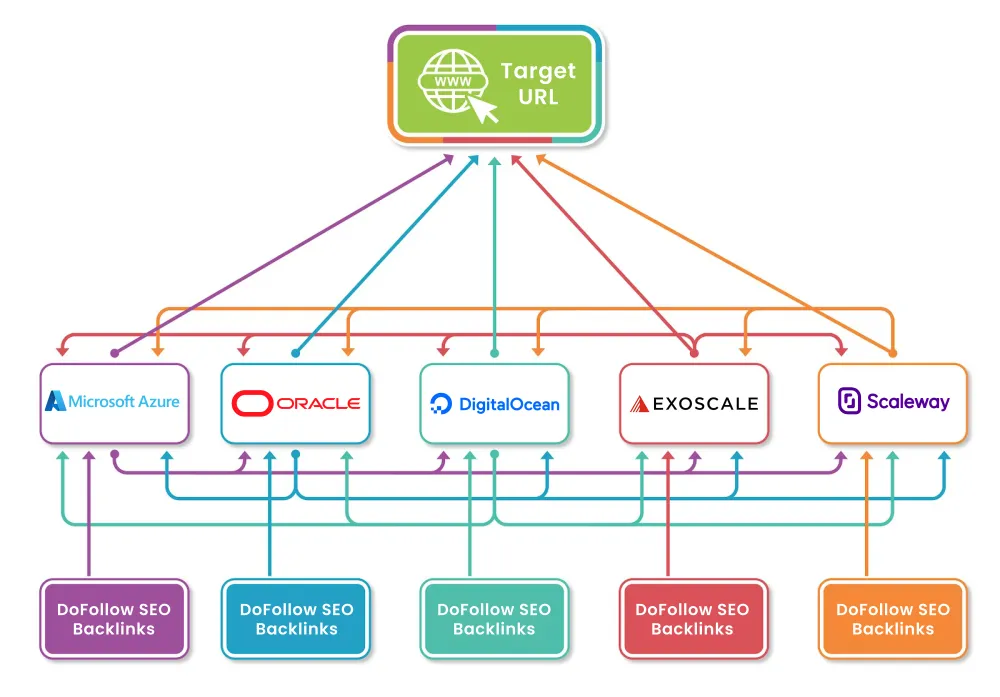Exploring Cloud Services: Key Conveniences and Applications
Exploring Cloud Services: Key Conveniences and Applications
Blog Article
Recognizing the Different Types of Cloud Services and Their Usages
In today's electronic landscape, the world of cloud computing supplies a diverse selection of solutions that accommodate the needs of people and organizations alike. From Facilities as a Solution (IaaS) to Software as a Solution (SaaS), each kind of cloud service offers a distinct purpose and provides unique advantages. Comprehending the distinctions in between these different cloud models is important for enhancing procedures, improving scalability, and ensuring cost-efficiency in a significantly interconnected globe. By exploring the nuanced functionalities and applications of each cloud solution, one can browse the complexities of cloud computing with precision and foresight.
Facilities as a Solution (IaaS)
Infrastructure as a Service (IaaS) supplies individuals with virtualized computing resources over the net on a pay-as-you-go basis. This cloud computer design supplies essential IT facilities such as digital machines, storage, and networking without the need for organizations to buy and take care of physical web servers and information centers. With IaaS, customers can scale sources up or down based on their requirements, offering versatility and cost-efficiency.
Among the key advantages of IaaS is its capability to swiftly provision and release infrastructure elements, enabling businesses to react quickly to transforming needs and market problems. By contracting out infrastructure administration to the provider, organizations can focus much more on their core company tasks as opposed to handling the complexities of equipment upkeep and upgrades.
Moreover, IaaS provides a high degree of integrity and safety and security, with providers normally offering robust data back-up, disaster recovery, and cybersecurity actions. This assists ensure that important company procedures remain undisturbed and data stays shielded against possible threats. linkdaddy cloud services. Generally, Infrastructure as a Solution streamlines IT operations, enhances scalability, and lowers capital expenditures for organizations of all dimensions
Platform as a Solution (PaaS)
Building upon the foundation of Infrastructure as a Service (IaaS), Platform as a Solution (PaaS) supplies a comprehensive atmosphere for designers to develop, deploy, and manage applications without the complexities of underlying facilities administration. PaaS gives a platform with devices and solutions that simplify the advancement process, enabling developers to concentrate on composing code and building applications rather than taking care of infrastructure issues.

Software Application as a Service (SaaS)
Software as a Solution (SaaS) changes the means organizations accessibility and use software application applications by using them on a registration basis via cloud companies. This cloud computer design gets rid of the need for companies to set up and keep software on specific gadgets, as whatever is held and taken care of centrally in the cloud.
SaaS supplies a cost-effective service for companies as they just spend for the software they use without the included costs of hardware upkeep or software updates. It also provides scalability, enabling firms to easily adjust their software application demands based upon their demands.
Furthermore, SaaS applications can be accessed from any type of device with an internet connection, advertising collaboration and versatility amongst remote teams. Protection is a top Home Page priority in SaaS, with service providers carrying out durable steps to shield data saved in the cloud.
Popular examples of SaaS consist of client partnership management (CRM) software program like Salesforce, productivity tools like Microsoft Workplace 365, and collaboration systems like Google Work area. SaaS remains to acquire traction in business world because of its scalability, cost-efficiency, and comfort.
Feature as a Solution (FaaS)
With the development of cloud services like Software as a Solution (SaaS) streamlining software distribution, Feature as a Service (FaaS) stands for a standard shift in how code is implemented in a serverless setting. FaaS enables developers to read review create and implement private functions or pieces of code in feedback to details events without the need to manage the framework. This serverless computer model enables developers to concentrate exclusively on composing code to carry out particular capabilities, without worrying themselves with the underlying framework or web server monitoring.
Functions are performed in stateless containers that are spun up and down as required, guaranteeing optimal resource use and cost-effectiveness. By abstracting the facilities layer, FaaS streamlines development, speeds up time to market, and boosts general agility in releasing cloud-native applications.
Storage as a Solution (STaaS)
A basic component in cloud computer, Storage as a Solution (STaaS) supplies users with a effective and scalable solution for handling information storage needs. STaaS allows organizations to save and get data from remote servers using the internet, getting rid of the need for on-premises equipment. This solution provides versatility by allowing customers to pay just for the storage they make use of, making it a cost-effective remedy for services of all sizes.

STaaS click to find out more is particularly beneficial for organizations with changing storage demands, as it provides a safe and reputable storage remedy without the requirement for significant ahead of time investments. By leveraging STaaS, organizations can streamline their information monitoring procedures, enhance accessibility, and boost data security in an inexpensive way.

Verdict
Finally, comprehending the various kinds of cloud services and their usages is necessary for companies and people aiming to leverage the benefits of cloud computer. Each kind of cloud service supplies special benefits and functionalities, satisfying particular requirements and needs. By utilizing the best cloud solution, companies can enhance their effectiveness, scalability, and adaptability in handling their IT infrastructure and applications. It is essential to examine the specific requirements and objectives before choosing the appropriate cloud solution for optimum performance.
From Facilities as a Service (IaaS) to Software Application as a Solution (SaaS), each kind of cloud service offers an unique objective and offers unique advantages. Cloud Services. By checking out the nuanced functionalities and applications of each cloud service, one can navigate the intricacies of cloud computing with accuracy and insight
With the advancement of cloud solutions like Software program as a Solution (SaaS) improving software application distribution, Function as a Solution (FaaS) represents a paradigm change in just how code is implemented in a serverless environment.In final thought, understanding the different kinds of cloud services and their usages is essential for people and organizations looking to take advantage of the benefits of cloud computer. By making use of the ideal cloud solution, organizations can enhance their performance, scalability, and versatility in managing their IT framework and applications.
Report this page